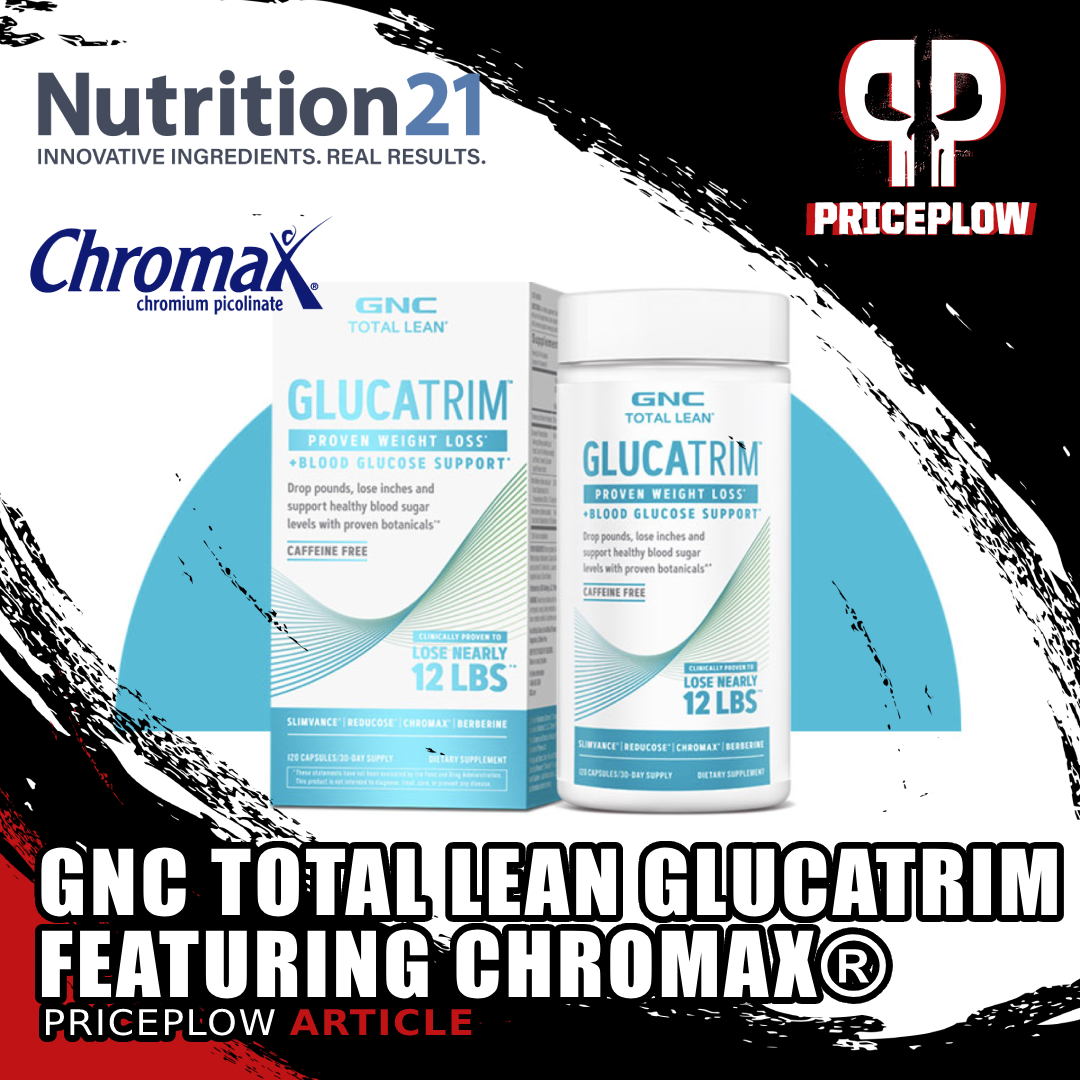
GNC's straightforward approach to formulation shines with their Total Lean GlucaTrim for glycemic control and body composition. The first ingredient, elemental chromium from Chromax® chromium picolinate, sets the tone for this potent formula.
If there's one brand in the supplement industry that's really turned things around in recent years, it's GNC. You love to see it, too, because GNC was one of the companies that made the nutritional supplement movement as we know it, and for that reason, is beloved by both formulators and consumers.
In addition to GNC's aggressive partnerships with some awesome up-and-coming brands, the company has developed exceptional in-house brands that have furnished some of the industry's best offerings in recent years.
We're not just talking about Beyond Raw, either. GNC opts for ingredients that have broad research backing, excellent safety profiles, and usually, a long history of use in supplements.
One such ingredient that fits that bill is Nutrition21's Chromax® branded chromium picolinate, which is exactly what GNC formulated into their new body composition support supplement:
GNC Total Lean GlucaTrim, Featuring Chromax®
GNC's no-nonsense approach to formulation is exemplified by their Total Lean series formula for glycemic control and body composition, GlucaTrim. In fact, its potential is evident from the very first ingredient shown on the label, a solid dosage of elemental chromium from Chromax® chromium picolinate.
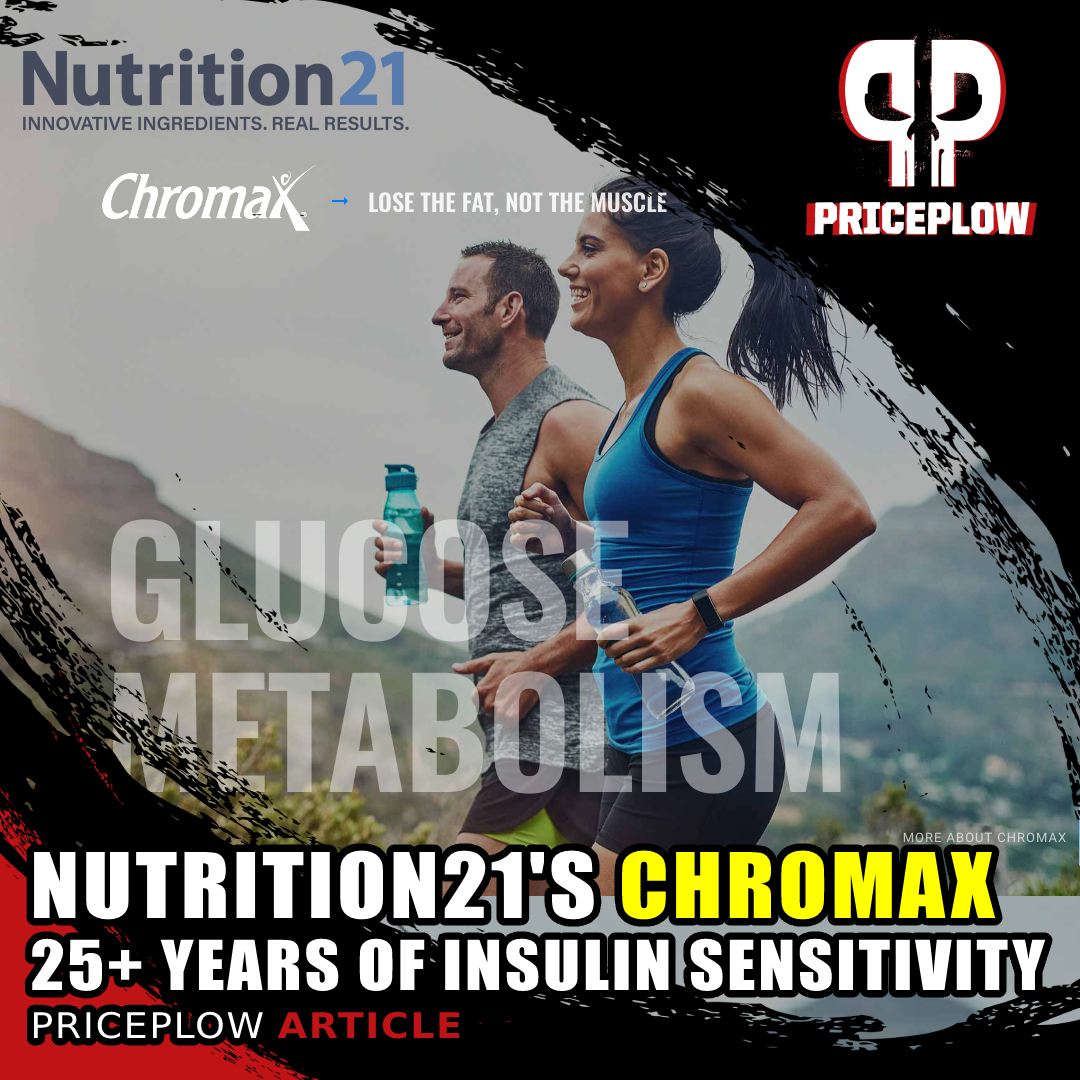
For over 25 years, Chromax chromium picolinate has been improving insulin sensitivity. We argue that it's only gotten better, as dietary mineral deficiencies have gotten worse over this time period.
We call it a "body composition" supplement because, although it can support muscular tissue and healthy fat oxidation, it's not a "fat-burning supplement" per se. Rather, this formula is designed to support your body's normal insulin response to help maintain normal glycemic control, which will have profound downstream effects on metabolic health and body composition, including maintaining lean muscle mass during weight loss.
Chromax, along with berberine, is one of those ingredients that works so well it's hard to imagine a diet support supplement without it. Combine these two in the same formula, like we have here, and you're left with a powerful combination for health and weight management.
Let's get into how this one works, but first, check The PricePlow news, deals, and availability:
GNC GlucaTrim – Deals and Price Drop Alerts
Get Price Alerts
No spam, no scams.
Disclosure: PricePlow relies on pricing from stores with which we have a business relationship. We work hard to keep pricing current, but you may find a better offer.
Posts are sponsored in part by the retailers and/or brands listed on this page.
This area is reserved for Team PricePlow's upcoming videos.
Subscribe to our channel and sign up for notifications so you catch it when it goes live!
GNC Total Lean GlucaTrim Ingredients
GNC suggests taking two servings per day. In a 2-capsule serving of Total Lean GlucaTrim, you get the following:
-
Chromium (as Chromax® Chromium Picolinate) – 200 mcg (571% DV)
Note that when following directions, your daily doses will be the right column, as GNC GlucaTrim should be used twice daily.
Chromax® is a chemical compound named chromium picolinate, formed from the mineral chromium and the amino acid metabolite picolinic acid. Here, we have 200 micrograms of elemental chromium, which is 571% of the recommended daily allowance.
In general, chromium picolinate is a very bioavailable form of chromium, a distinction explained by its ability to be absorbed and support numerous metabolic processes.[1,2]
Supporting carbohydrate metabolism
For optimal metabolic health, it's crucial to ensure the body uses insulin efficiently, and this is where Chromax can be beneficial.
Chromium interacts with insulin, basically promoting a healthy insulin response, supporting glycemic control,[3-5] although the scientific understanding of how it works in totality isn't yet complete. Its action on insulin is a big deal since, as we've probably all heard by now, insulin sensitivity is one of the most important factors— if not the most important — in lifelong metabolic health and function.[6]
When ingested, chromium attaches to a low-molecular-weight peptide complex known as low-molecular-weight chromium-binding substance (LMWCr). This complex, made up of various amino acids, can chelate chromium ions, forming an active compound called chromodulin.[3,4]
While the exact way chromium influences insulin remains unclear, it's believed that the interaction between chromium and chromodulin plays a significant role. Research indicates that chromodulin can activate the insulin receptor in a manner similar to insulin itself, while also enhancing the effect of circulating insulin. One in vitro study demonstrated that chromodulin can boost insulin signaling activity by up to 800%.[7] Notably, chromium is unique in its ability to stimulate chromodulin activity; no other mineral has been shown to have a comparable effect.[5]
Therefore, Chromax may positively influence a healthy insulin response, potentially benefiting various types of diets. And we see this in clinical research at numerous doses:
Effect on body composition
Chromax is the industry's most trusted and tested form of chromium picolinate, helping users stay insulin sensitive for decades
At least one peer-reviewed study has demonstrated that a dose of chromium picolinate providing 200-micrograms of elemental chromium – the precise dose used in GlucaTrim – can significantly improve body composition.[8]
In that study, 154 overweight adults received either chromium picolinate or a placebo and were instructed not to change their habits with respect to either diet or exercise. By the end of the 72-day study period, the chromium group had shed 1.4% body fat, whereas the placebo group had only lost 0.3%. Moreover, the chromium group gained 1.2 pounds of lean mass.[8]
Two servings per day = 400mcg
The research team that performed the above study using 200 micrograms of elemental chromium from chromium picolinate then conducted a study using 400 micrograms of elemental chromium per day.[9] Note that this is the dose when consuming the recommended two servings per day.
This study used a similar design as above, where 122 participants were randomized to receive either chromium picolinate (yielding 400 micrograms of elemental chromium) or placebo. Caloric intake and energy expenditure were logged and monitored, and measurements were taken before and after 90 days of use.[9]
At the completion of the study, the chromium picolinate group lost significantly more fat mass and body weight (17 pounds compared to 4 pounds in placebo), reducing body fat by 6.3% compared to 1.2% in the placebo group -- without any significant losses in lean mass![9] These results are a testament to Chromax's ability to help maintain lean muscle mass during weight loss, ultimately helping to support overall body composition.
Again, note that this study used the amount you'd get when taking two servings of Total Lean GlucaTrim, which is the suggested daily dose.
We cover Chromax and its other benefits extensively in the following two articles:
-
Slimvance Patented Blend – 450 mg
Slimvance is a patented blend of moringa leaf extract, curry tree leaf extract, and turmeric extract. We don't know exactly how much of each ingredient is provided, but there have been at least two successful clinical trials[10,11] following one mechanistic study[12] using the ingredient.
Looking into each constituent, they all have incredible metabolic potential:
Moringa [Moringa oleifera] leaf extract
Moringa, also known as horseradish tree because of its horseradish-like taste, is an incredibly rich source of powerful phytochemicals like quercetin,[13] chlorogenic acid,[13] and various phenolic acids, flavonoids, isothiocyanates, tannins, and saponins.[14]
Moringa can increase the body's production of internal antioxidants like superoxide dismutase (SOD), catalase (CAT), and glutathione (GSH), while decreasing the body's production of inflammatory cytokines like TNF-α, IL-1β, and IL-6.[14] This positive impact on your body's overall redox balance translates into improved glycemic control,[14] which can make a major difference in fat-loss efforts given the close connection between oxidative stress, inflammation, and obesity.[15]
Curry tree [Murraya koenigii] leaf extract
Murraya koenigii, commonly known as curry leaf tree, is a tropical and sub-tropical plant renowned for its culinary and medicinal applications. Native to India and Sri Lanka, its leaves are a staple in South Asian cooking, primarily thanks to their aroma and distinctive flavor.
Murraya koenigii has also been used for centuries in traditional medicine systems, including Ayurvedic medicine.[16] One long standing claim is that its leaves, roots, and bark possess various therapeutic properties, including anti-inflammatory, antioxidant, and antimicrobial effects. Modern scientific studies have begun to validate this traditional wisdom by identifying a wide range of bioactive compounds in the plant, such as alkaloids, flavonoids, and phenolic compounds, all of which are responsible for its wide range of health benefits.[17]
One of the most intriguing areas of research on this plant is its potential role in fat loss. A number of its bioactive constituents, particularly mahanimbine, have shown promising effects in improving lipid metabolism. Mahanimbine, a carbazole alkaloid found in curry leaves, has been observed to enhance lipid breakdown and inhibit fat accumulation in adipocytes, the cells responsible for storing fat in the body.[18]
Compared to other popular stimulant-free weight loss ingredients, Chromax seems to outperform them all! Image courtesy Nutrition21.
Murraya koenigii has shown potential in improving postprandial hyperglycemia, thanks to its content of mahanimbine and various flavonoids that help enhance insulin sensitivity and promote glucose uptake by cells. These compounds inhibit key digestive enzymes like α-amylase and α-glucosidase, thus slowing down the breakdown of carbohydrates into glucose, creating a more gradual rise in blood sugar levels. The antioxidant properties of Murraya koenigii also help reduce oxidative stress, further improving postprandial blood glucose levels.[19]
Turmeric [Curcuma longa] rhizome extract
Curcuma longa, also known as turmeric, is a vibrant yellow spice widely used in Asian cuisine and traditional medicine, including Ayurvedic medicine.[20] Derived from the rhizomes of the turmeric plant, this spice is renowned for a potent bioactive pigment called curcumin, which gives turmeric its characteristic yellow-orange color. Curcumin, along with a class of related compounds known as the curcuminoids, is the primary driver behind turmeric's extensive health benefits, which includes improving glycemic control and combating obesity.[21]
Curcumin has demonstrated significant potential in enhancing glycemic control through several mechanisms:
Studies show that higher-dose Chromax (yielding 600 and 1000 micrograms of elemental chromium) is effective at reducing appetite, which helps promote weight loss. Image courtesy of Nutrition21.
- It can improve insulin sensitivity, which is vital for effective glucose uptake by cells[22]
- By activating peroxisome proliferator-activated receptor-gamma (PPAR-γ) and AMP-activated protein kinase (AMPK), curcumin enhances glucose uptake in muscles and adipose tissues, thereby lowering blood glucose levels[23]
- Additionally, curcumin suppresses hepatic gluconeogenesis—the production of glucose by the liver—by downregulating the expression of key gluconeogenic enzymes, thus reducing overall blood sugar levels.[24]
Moreover, given the close connection between oxidative stress, inflammation, and obesity,[15] it's noteworthy that curcumin has been shown to possess potent anti-inflammatory properties. It inhibits the activity of nuclear factor-kappa B (NF-κB), a protein complex that plays a crucial role in inflammatory responses. By suppressing NF-κB and other pro-inflammatory cytokines, curcumin reduces inflammation, thereby improving insulin signaling and glucose metabolism.[25] Curcumin's strong antioxidant effects, particularly in your cells' all-important mitochondria, help neutralize reactive oxygen species (ROS) and reduce oxidative stress, thereby protecting against cellular damage and improving metabolic health.[26]
Curcumin can also inhibit the differentiation of preadipocytes into mature adipocytes by downregulating the expression of adipogenic genes, such as peroxisome proliferator-activated receptor-gamma (PPAR-γ) and CCAAT/enhancer-binding protein-alpha (C/EBP-α).[27-29] Ultimately, this decreases fat cell growth and, hence, the body's potential for fat storage.
Finally, curcumin can improve energy balance by triggering non-shivering thermogenesis (NST), a metabolic process whereby calories are burned as heat. NST takes place in brown adipose tissue (BAT), leading to increased energy expenditure and reduced fat storage. Curcumin's thermogenic effect is mediated through the activation of proteins like uncoupling protein-1 (UCP-1) in BAT, which increases the number of calories your body can burn in a day.[30]
-
Reducose® White Mulberry (Morus alba) Leaf Extract (Standardized to 5% 1-deoxynojirimycin) – 250 mg
Morus alba, commonly known as white mulberry, is gaining attention for its potential as a fat loss adjunct. This plant, native to China but now grown worldwide, has long been used in traditional Chinese medicine.[31]
One of the most important bioactive constituents in Morus alba leaves is 1-deoxynojirimycin (DNJ), an alkaloid that inhibits α-glucosidase, an enzyme responsible for hydrolyzing carbohydrates into glucose.[32] By doing so, DNJ helps reduce the absorption of sugars in the intestine, leading to lower blood sugar levels and, consequently, reduced fat storage.[33] To take advantage of this, GNC wisely chose to formulate with Reducose®, which is standardized to 5% 1-deoxynojirimycin.
This particular mechanism of action could be particularly beneficial for individuals with insulin resistance or type 2 diabetes, as it should help regulate blood glucose levels and prevent the glucose spikes and crashes that often lead to food cravings and increased fat accumulation.
A double-blinded, placebo-controlled study performed specifically with Reducose® showed that using the novel extract led to significantly lower glycaemic and insulinaemic responses compared to placebo in response to 50 grams of maltodextrin 37 healthy adults.[34] A follow-up study replicated these findings with 38 more adults at an even higher carbohydrate dose (75 grams of table sugar).[35]
Morus alba can also significantly improve lipid metabolism. Research indicates that extracts from white mulberry leaves can enhance lipid breakdown and inhibit the formation of new fat cells, a dual action that not only helps reduce existing fat stores, but also prevents the development of new fat deposits.[36]
Nutrition21 is a leader in the sports nutrition industry, making huge strides towards supplement research, safety, transparency, and efficacy
It's also been shown to improve lipid profiles by lowering levels of bad cholesterol (LDL) and triglycerides while increasing good cholesterol (HDL).[37,38] This improvement in lipid metabolism not only aids in fat loss but also supports cardiovascular health, which is often compromised in those suffering from overweight and obesity.
-
Indian Barberry (Berberis asiatica) Bark Extract (Standardized to 75% Berberine) – 66 mg
Berberine is one of the supplement industry's premier glucose disposal agents (GDAs), a category defined as all supplements or compounds that can improve the body's ability to utilize and manage glucose. By promoting better glucose uptake and utilization, GDAs can help regulate blood sugar levels, reduce insulin resistance, and support overall metabolic health.
More specifically, berberine is an alkaloid that's sourced from the Berberis family of shrubs, which have been long employed by traditional Chinese medicine (TCM) and Ayurvedic medicine to help manage a wide range of ailments.
Berberine's primary mechanism of action is adenosine monophosphate kinase (AMPK) upregulation. The reason this aids glucose disposal is that AMPK helps shuttle nutrients, including glucose, into cells that need them.[39]
Thus, berberine can accelerate your cells' glucose uptake. When the glucose content of your cells goes up, the amount of glucose in your blood necessarily goes down, which is how berberine can decrease postprandial blood glucose levels.[40-43]
Other mechanisms of action include increased insulin sensitivity (particularly in muscle), downregulation of hepatic gluconeogenesis, reduced intestinal glucose absorption, positive gut flora modulation, and improved lipid metabolism.[39-44]
Berberine's powerful anti-inflammatory and antioxidant effects also, no doubt, contribute to its ability to improve glycemic control.[44]
Dosage and Directions
GNC's directions state to take two capsules twice daily with your two largest meals.
Conclusion: A powerful blend of Chromax and herbs
We love the combination of classic mineral science with Chromax alongside numerous botanicals to support the metabolism.
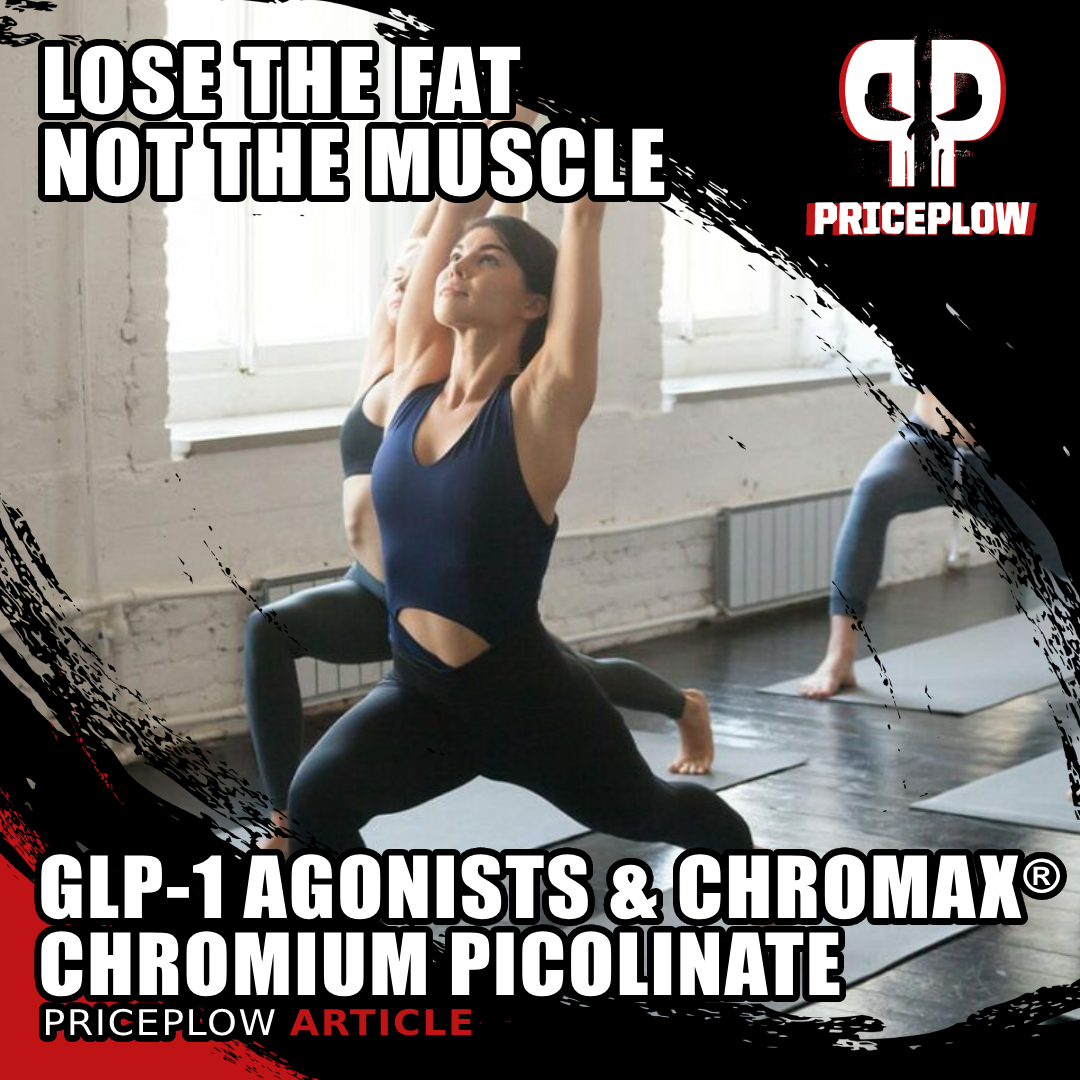
We're entering a new paradigm of dietary supplementation, with a goal of losing fat, not muscle. Regardless of your use of GLP-1 drugs or not, Chromax® Chromium Picolinate has a great place in every healthy person's life!
There are definitely some cool new ingredients in here, but again, we believe it's the chromium + berberine combination that's doing the heavy lifting here. And if that's the cornerstone of your formulation strategy, then there's no better form of chromium to use than Chromax chromium picolinate.
Another great thing to note about this formula is the abundance of powerful antioxidant and anti-inflammatory support. Slimvance is absolutely loaded with bioactive constituents that fit that bill, and white mulberry seems to be as well.
Finally, if you're interested in how Chromax can support healthy weight loss, whether or not you're on a GLP-1 agonist, read our recent article titled "A New Supplement Paradigm: GLP-1 Agonists and Chromax® Chromium Picolinate".
GNC GlucaTrim – Deals and Price Drop Alerts
Get Price Alerts
No spam, no scams.
Disclosure: PricePlow relies on pricing from stores with which we have a business relationship. We work hard to keep pricing current, but you may find a better offer.
Posts are sponsored in part by the retailers and/or brands listed on this page.
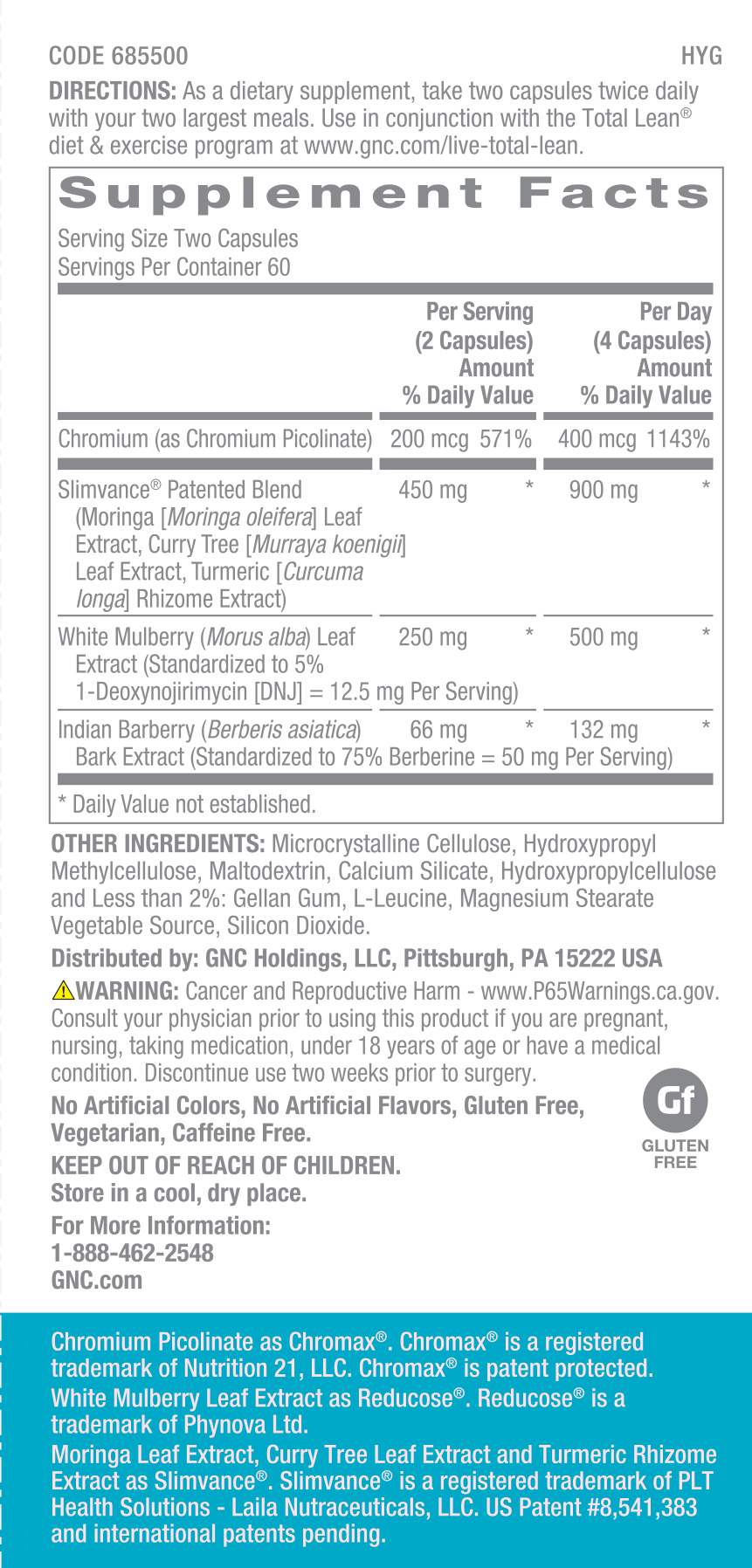

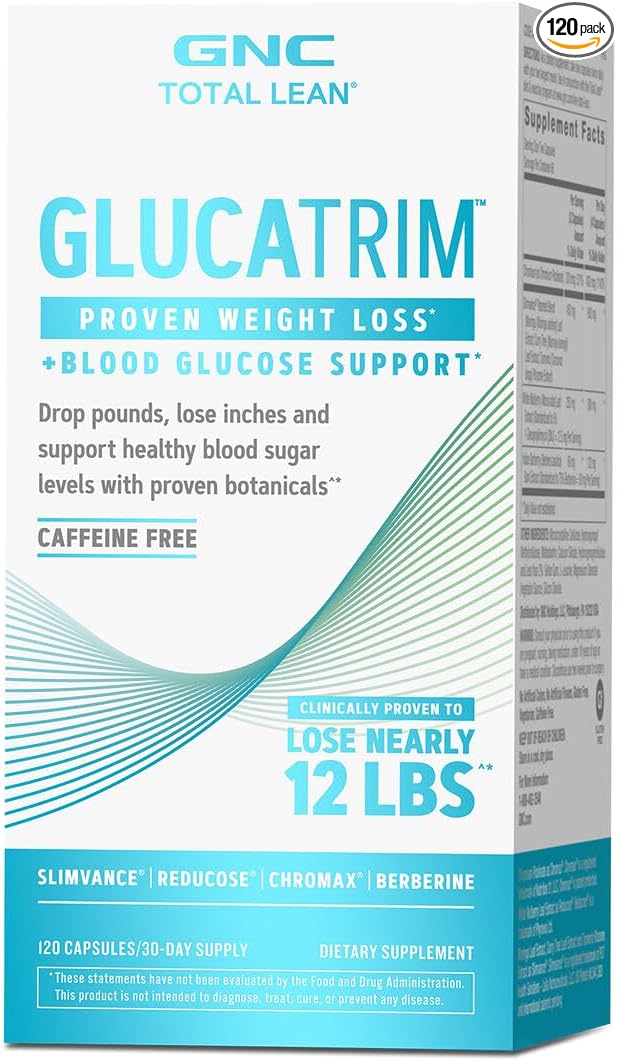
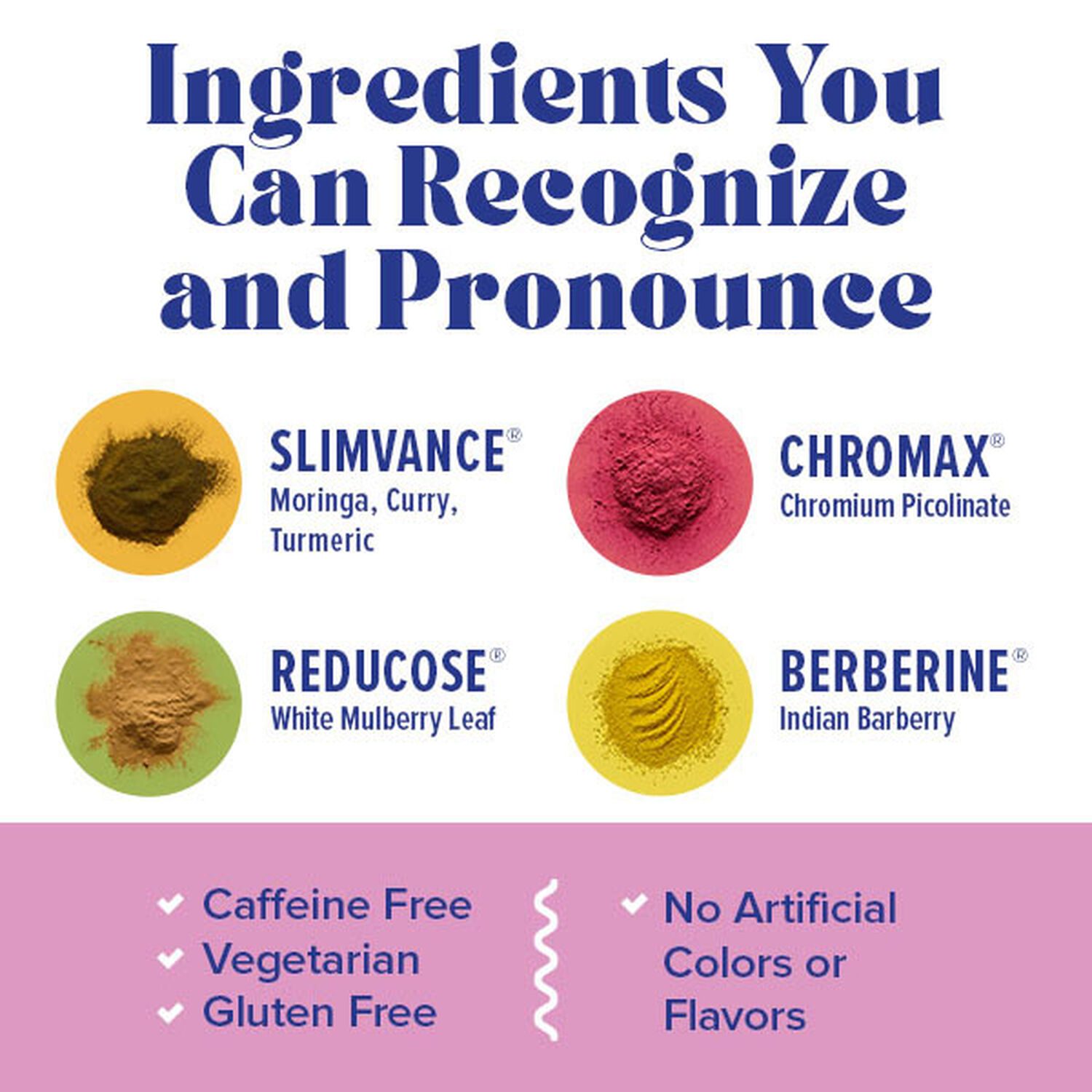
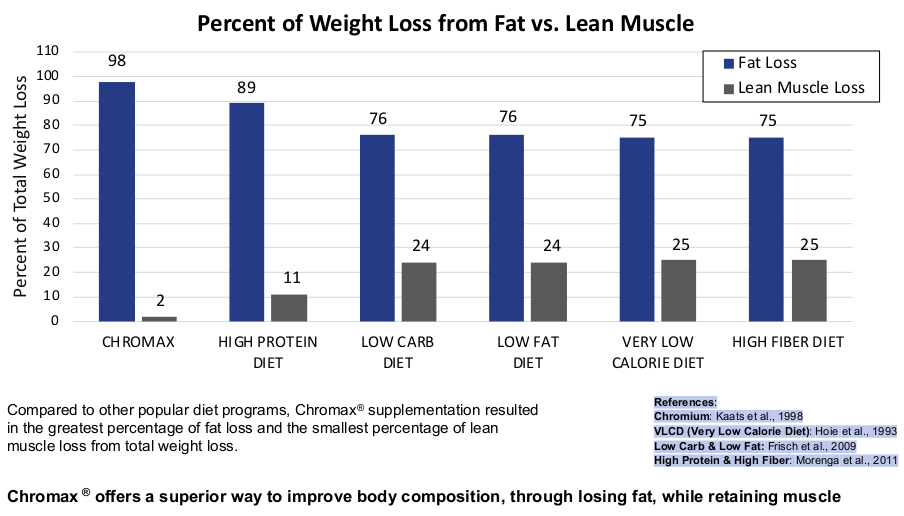
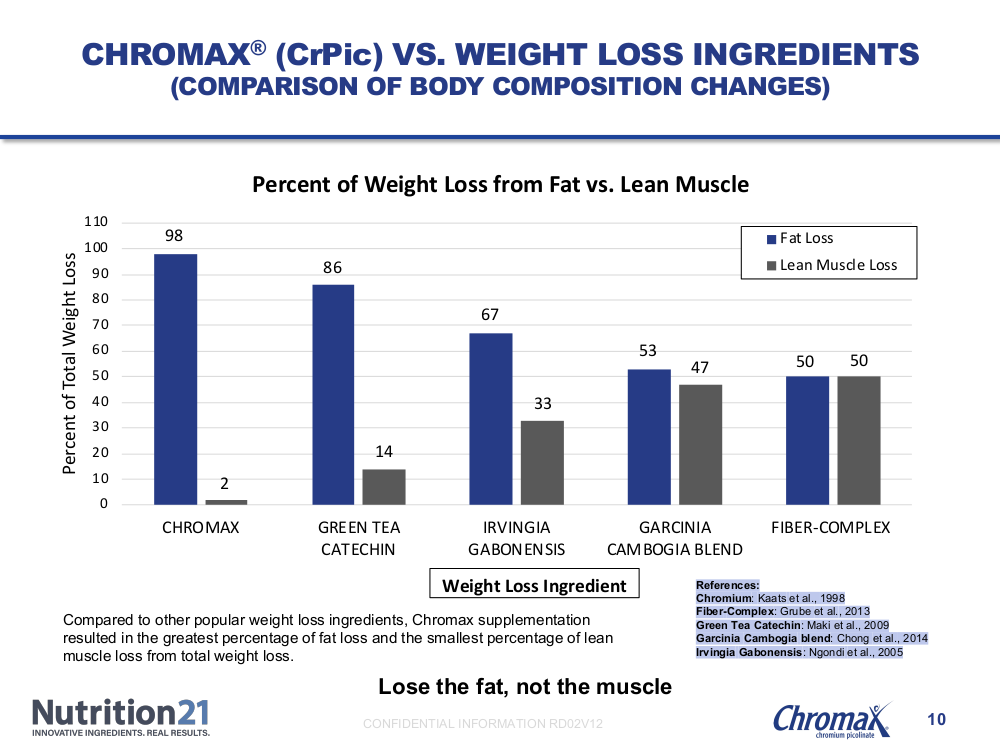
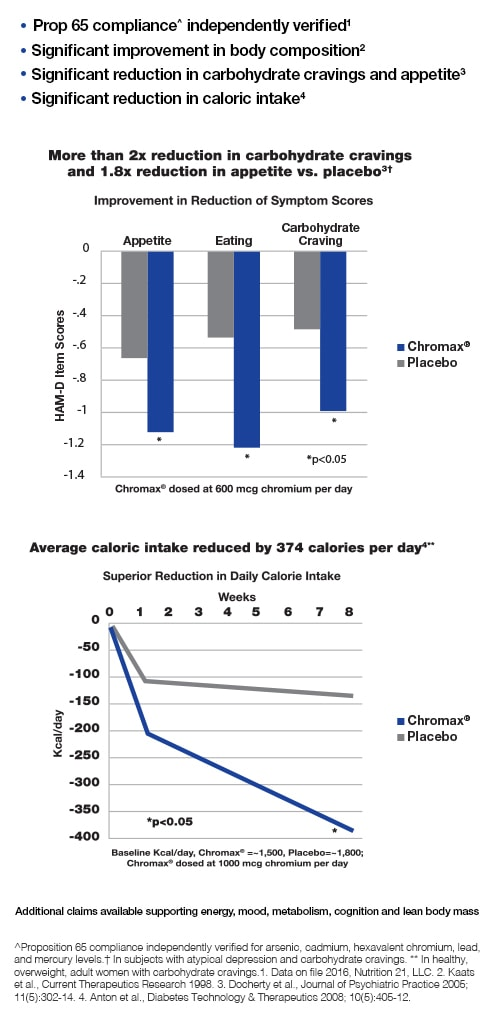
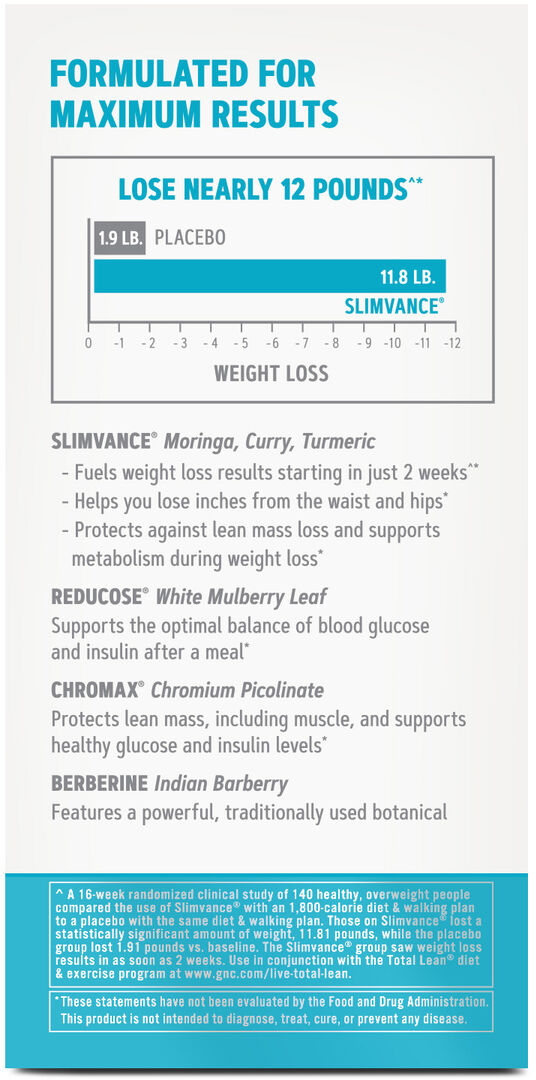

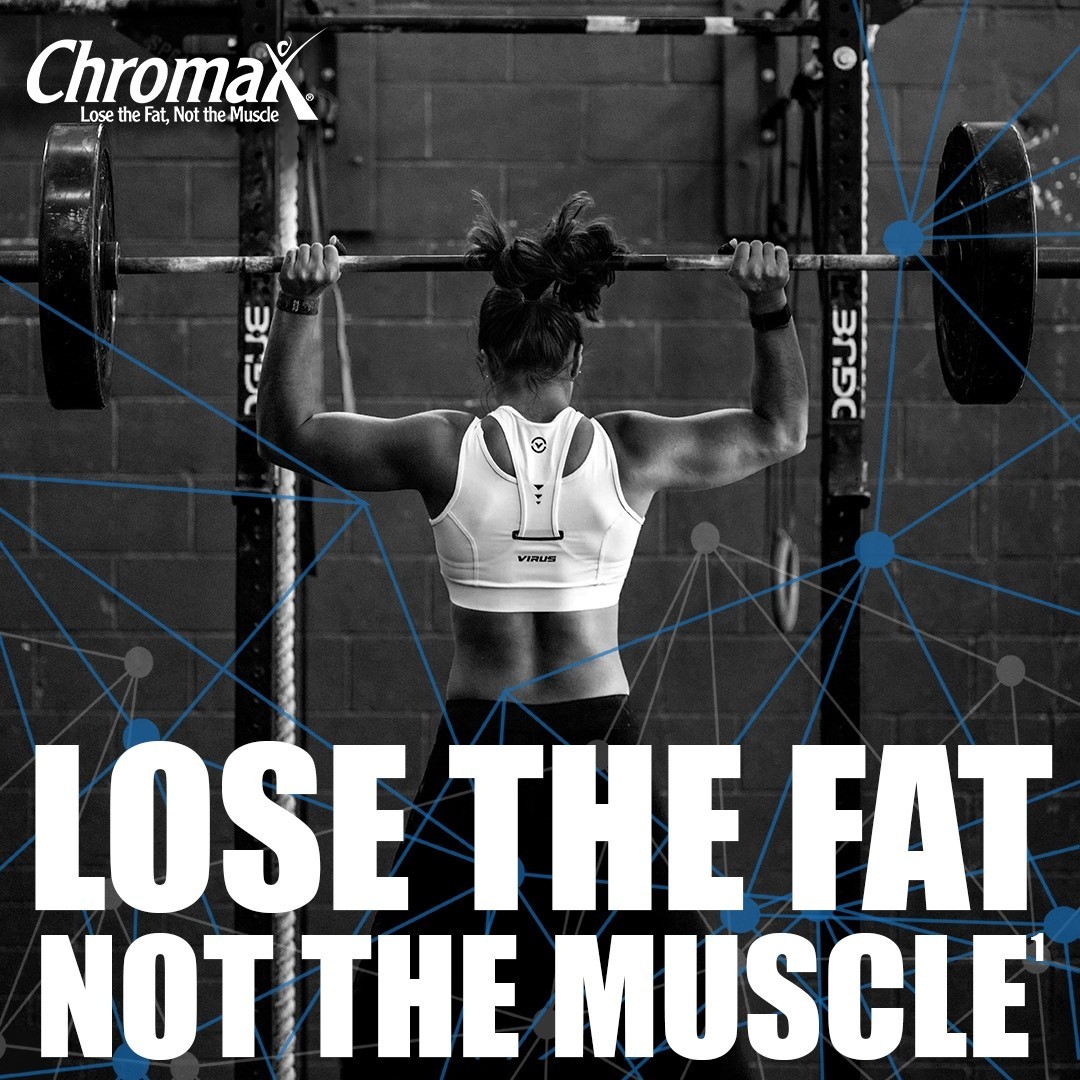


Comments and Discussion (Powered by the PricePlow Forum)